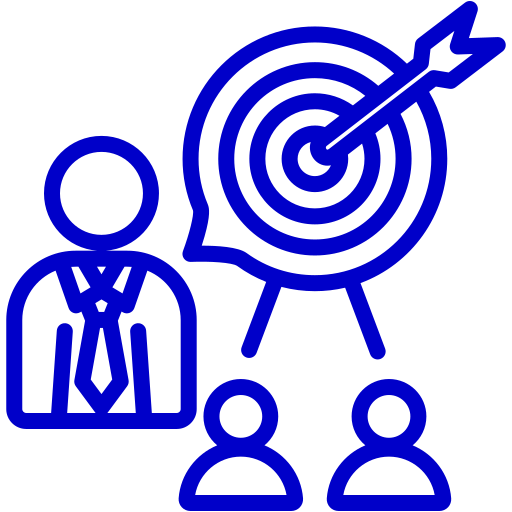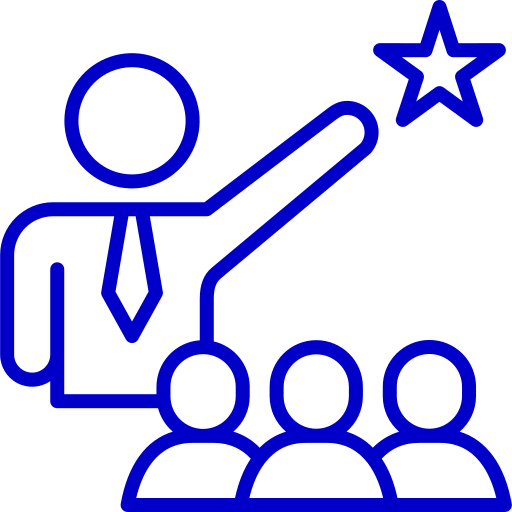8 Gamification Pitfalls to avoid

Gamification, as you know, is the process of taking game mechanics and applying them to non-gamified situations. It involves using fun contests or systematized rewards and incentives to drive the behavior of the players and achieve the desired results.
Although this technique has been used in some way or another since time immemorial, in the past few decades it has become a discipline in its own right because of technological advancements. Technology has enabled gamification to take off and be utilized in new, innovative ways.
For example, in today’s day and age, virtual contests have digital badges and rewards which are highly effective in motivating the players. And also the whole gamification process can be automated to minimize cost and effort.
This led to a lot of companies adopting the gamification strategy to drive the performance of their employees. Due to its proven positive effect on employees’ engagement and motivation, gamification has become a popular initiative that has been introduced in various workplaces around the world.
Due to its simplicity, gamification is really easy to implement at your workspace. However, it can also go wrong if mistakes are made. That’s where this blog post comes in. From our experience of gamifying work for employees at a lot of reputed companies, we have gathered the top 8 gamification mistakes that people usually make while implementing gamification.
Learning from these mistakes will help you to introduce your gamification initiative seamlessly into your business. Keep reading to find out what they are!

1. Not having clear gamification goals
Ask yourself this question: ‘what is the objective of my game?’
If you don’t get an answer to this question, then you are not likely to engage and captivate your audience.
Before implementing your gamification strategy, you have to decide on the clear objectives of your game
So make sure that you sit and discuss with your team on what is it that you want to achieve mainly through this competition?
Here are some popular gamification goals that people usually have:
- To drive higher levels of employee engagement at work
- To change the behavior of the employees
- To stimulate the creativity of the employees
- To encourage teamwork
- To drive up quarterly or annual sales
- To encourage employees to achieve certain business targets
- To improve customer satisfaction
Whatever your reason might be, make sure that everyone who is involved in the gamification initiative is clear about the ultimate goal of the game.
2. Having complicated game mechanics
Since the primary purpose of gamification is to achieve desired outcomes through a designated pathway, game mechanics should be simple and straightforward. You don’t want to complicate matters with point systems that are hard to comprehend or leaderboards that involve a complex set of rules and criteria.
Keep it as simple as possible so that the players can easily understand
- What is the target for them to achieve?
- What is the timeframe to achieve that target?
- What KPIs will be measured in the game?
- How will the points get allotted to them at each step of the game
- What rewards will they win upon reaching the target? etc
Gamification doesn’t need to be complicated in order for it to work. In fact, a lot of workplace gamification experts advocate for the simplicity of the games.
The design of gamification should be in such a way that
- It is easily understood by your players
- It increases their engagement at work
- And produces desired results for them
If your game mechanics are getting in the way and hindering the outcome of the game then you may need to take a look at how you can simplify the process
3. Inspiring too much or too little competition and frustrating the beginners
Like most things in this world, balance is the key in gamification as well. So, if it inspires too much or too little competition, you simply will not get the desired results you hoped for.
For example,
- If your gamification simply rewards the “rock-star performers” and leaves everyone else behind, then you run the risk of a majority of players losing interest in your game and getting disengaged
- On the other hand, if your game has too many low-hanging fruits then it fails to motivate both the low performers and high performers to push their limits.
So, avoid having overtly ambitious or overtly easy targets which could turn your gamification into “shamification”.
Instead, build missions, levels, categories, and even handicaps into your gamification initiative so that the employees of all experience and skill levels feel that progress is attainable. This way, everyone gets to win something or the other.
4. Prioritizing rewards over results
At SmartWinnr, quite often, when we work with clients and help them plan their gamification campaigns, we see that a lot of them get fixated on focusing their campaign on the “Rewards” aspect of their game. Because they think that is what is going to attract their players to their game.
No doubt, rewards are an important part of any gamification strategy, but they are not the centerpiece. They are merely there as one of the many motivators to help your players achieve the desired results. So, it’s not ideal to place the rewards above the results in a game.
Because, in your gamification campaign, when you advertise a very attractive reward as the centerpiece, people will do whatever it takes to win (even cheat). This leads to your players placing their entire focus on the prize rather than focusing on achieving the main objective of the game.
For this reason, your gamification campaign’s broader focus should be on the main objective that you want to achieve through the game. And then you can mention how game mechanics (like badges, points, and rewards) fit into this broader picture. It should not be the other way around.
5. Allocating the Wrong Rewards for tasks
Wow, it seems like rewards are a root issue for a lot of gamification pitfalls. In this case, choosing the wrong reward is on par with putting rewards above results.
If you’ve given your players a challenge that requires them to really roll up their sleeves, only to meet them with an underwhelming reward, be prepared for a mass exodus. Likewise, if you give the players an easily accomplishable task and offer a reward that far exceeds the task’s value, you will have negative effects where your reps won’t be motivated to give their best and push their limits.
So, it’s important that you choose the rewards wisely and base them on the complexity of a task and the effort required to accomplish that task.
Pro-tip: For gamification to work, your reward process needs to be effective, as this is what keeps your users engaged and motivated. It may be worth asking your players what kinds of rewards they would like to have; their answers may surprise you.
6. Focusing on results but ignoring the behavior
People often emphasize the outcome of the game so much that they forget about the behavior which drives that outcome.
For example, let’s say you want to boost the number of deals closed. While it might seem natural to create a contest or launch a gamification initiative rewarding the person who closes the most deals, this isn’t the best idea.
Think about it: What behavior leads to this result of more closed deals?
Actions like
- Making more calls
- Giving demos etc
If your reps don’t invest their time in these right actions, they will not be able to achieve the ultimate results.
Therefore, when you focus solely on results instead of behaviors, you run the risk of discouraging necessary behaviors or reducing customer satisfaction by driving the wrong actions. So, while it’s important to incentivize the achievement of the ultimate goal, you must not forget to incentivize the behaviors leading to that goal.
7. Creating visually unappealing leaderboards
It seems strange that I even have to talk about this but a surprising amount of people create competition leaderboards and themes that are just hard to look at.
While their game mechanics and objectives are all well planned and laid out, unfortunately, when the game is displayed on a leaderboard in front of the players, it ends up being not very visually appealing. A badly designed can actually lower the excitement of your players.
In today’s day and age, this should not be and does not have to be the case. There are a lot of Sales contest automation platforms that provide a plethora of options for you to create customized leaderboards. SmartWinnr, for example, helps you set various exciting themes for your contests and create very attractive leaderboards according to those themes.
8. Making it all about the money
The most obvious motivator is a cash award. While money is important – especially in sales environments – employee engagement is a complex beast. Things that may seem trivial can actually be incredibly important and rewarding.
When launching a gamification program, consider offering rewards other than cash. Here are some ideas:
- Preferred parking spots. This incentive is especially motivating in downtown locations or areas where parking is a premium.
- Dinner with the CEO or division head. This gives the employee exposure and the ability to share his or her ideas with senior leaders.
- Paid time off. Sweeten the pot with entertainment passes or vouchers for the entire family.”
Learn about the basics of gamificationPermalink
Want to understand the psychology behind sales gamification?Permalink
Read: The Psychology of Sales Gamification
Want to give out exciting awards and incentives to sales contest winners? Read the below articles:Permalink
23 Sales incentive ideas to keep your sales team motivated
Creative Employee Recognition Award Names
Employee Recognition Award Names in Hindi
Some more resources on sales gamificationPermalink
Gamification and Employee Engagement: the Why and the How
Accelerate Your Sales Performance Through Gamification
How Gamification can help to take your sales Incentive Plan to a whole new level?
Related Posts
LMS + Gamification for Enterprise Sales Teams
The 2025 Guide to LMS + Gamification for Enterprise Sales Teams Enterprise sales is a moving target. Messaging changes. Products...
Creating a Safe Learning Environment: AI’s Role in Sales Skill Development
In today's fast-paced sales environment, creating effective training programs that allow sales representatives to develop their skills in a supportive...
How can Trainers Use AI Sales Role plays to Train MRs Better Detailing and Closing Techniques
In general, companies investing in sales training are 57% more effective than those who don’t. Let’s break that down with...
Looking for a sales training software that takes your sales training to a whole new level?
Explore SmartWinnr’s Learning and Gamification features. Learn how to run fun and engaging sales training and sales coaching for your team through SmartWinnr.
Curious to learn more about it? Book a demo today!
 Two way AI Role Plays
Two way AI Role Plays Targeted Learning
Targeted Learning Gamification
Gamification Sales Coaching
Sales Coaching Sales Contest
Sales Contest Implementation
Implementation Consulting
Consulting Enterprise Ready
Enterprise Ready Pharmaceuticals
Pharmaceuticals Medical Devices
Medical Devices Insurance
Insurance Banking
Banking Technology
Technology Senior Living
Senior Living Sales
Sales Call Centers
Call Centers Marketing
Marketing Improve Sales Productivity
Improve Sales Productivity New Hire Onboarding
New Hire Onboarding New Product Launch
New Product Launch Channel Partner Training
Channel Partner Training Sales Events
Sales Events Success Stories
Success Stories Whitepapers and eBooks
Whitepapers and eBooks Contest Template Designer Tool
Contest Template Designer Tool Sales Training
Sales Training Gamification
Gamification All Blogs
All Blogs
